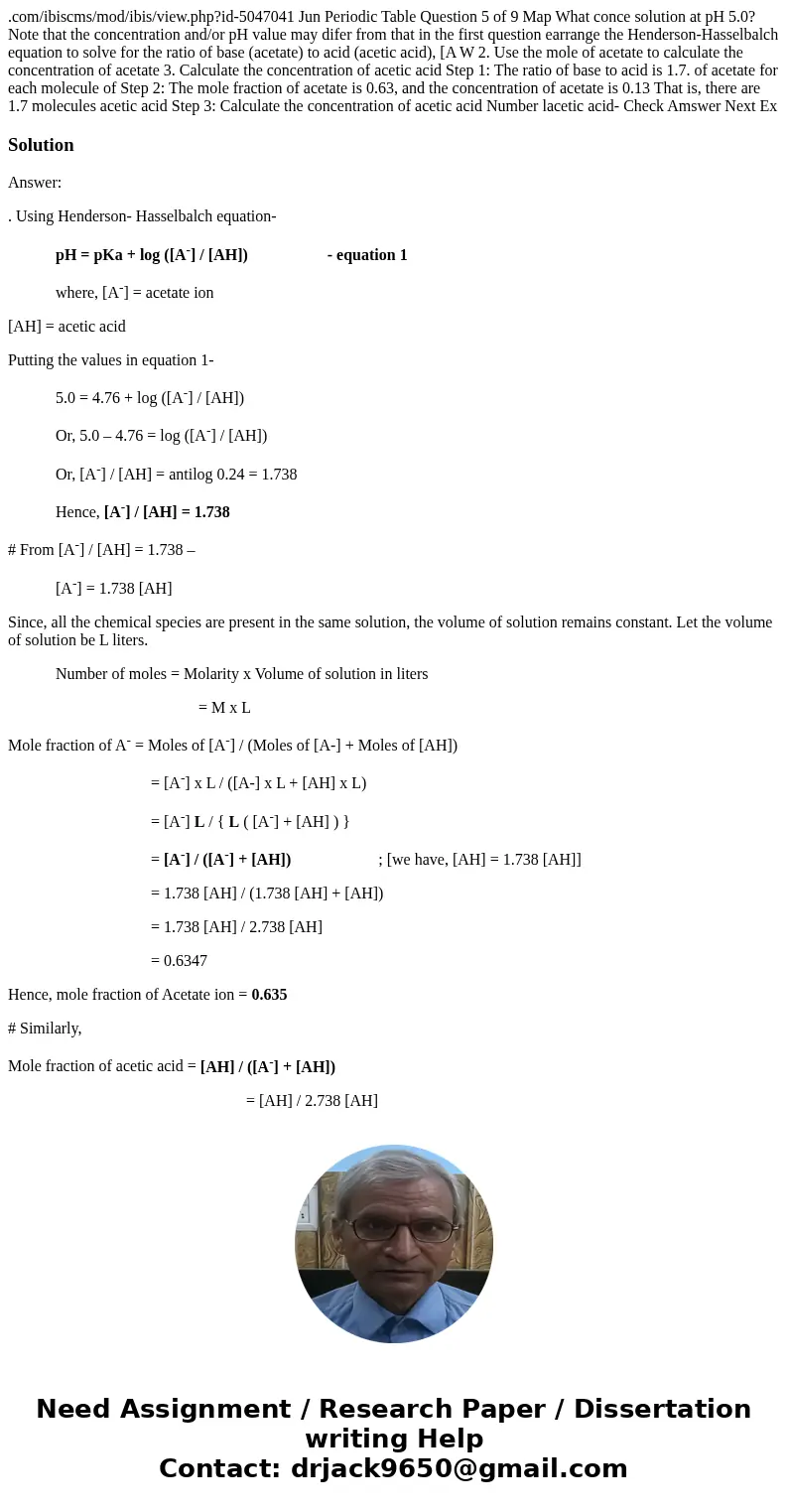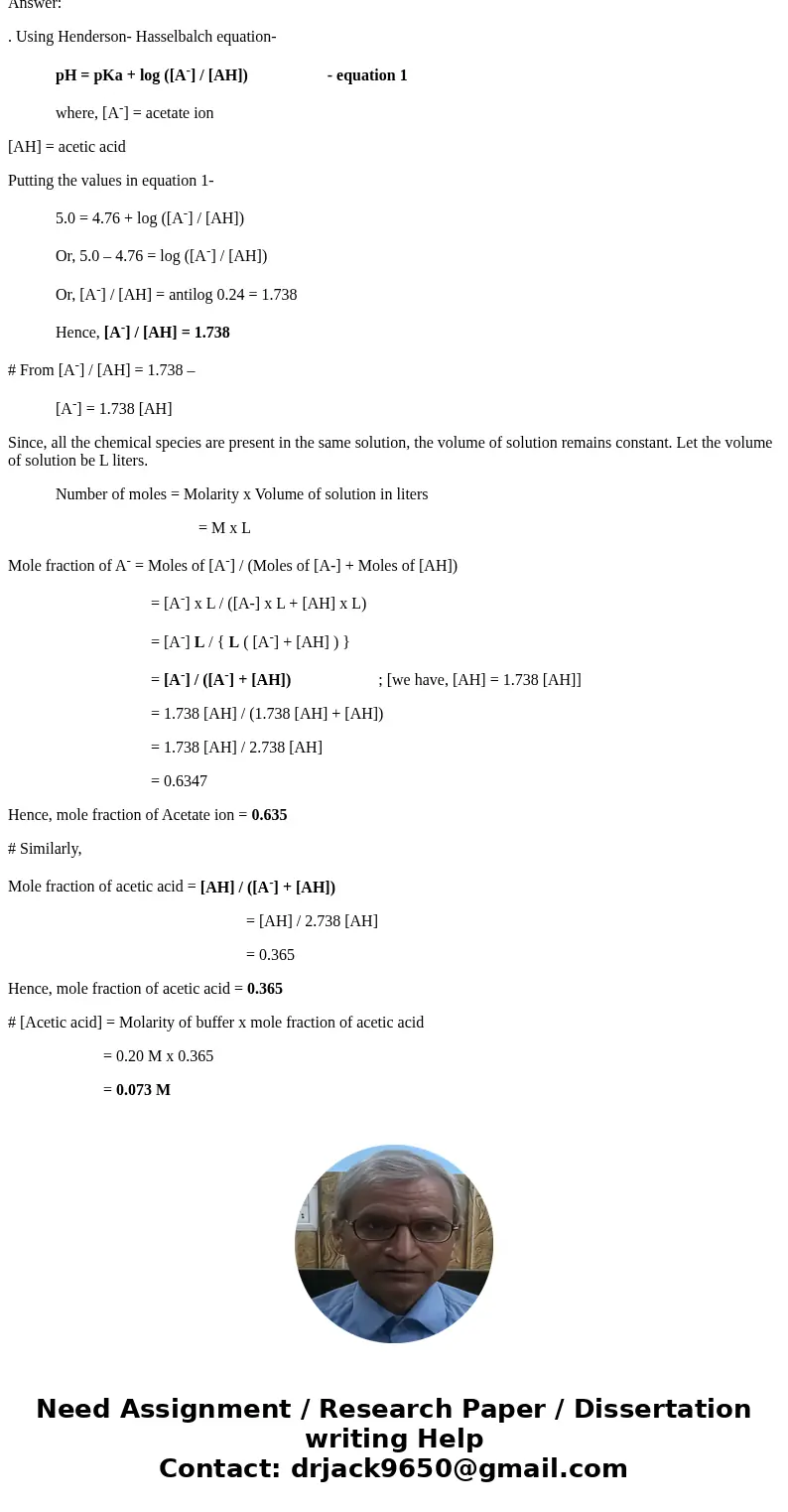comibiscmsmodibisviewphpid5047041 Jun Periodic Table Questio
Solution
Answer:
. Using Henderson- Hasselbalch equation-
pH = pKa + log ([A-] / [AH]) - equation 1
where, [A-] = acetate ion
[AH] = acetic acid
Putting the values in equation 1-
5.0 = 4.76 + log ([A-] / [AH])
Or, 5.0 – 4.76 = log ([A-] / [AH])
Or, [A-] / [AH] = antilog 0.24 = 1.738
Hence, [A-] / [AH] = 1.738
# From [A-] / [AH] = 1.738 –
[A-] = 1.738 [AH]
Since, all the chemical species are present in the same solution, the volume of solution remains constant. Let the volume of solution be L liters.
Number of moles = Molarity x Volume of solution in liters
= M x L
Mole fraction of A- = Moles of [A-] / (Moles of [A-] + Moles of [AH])
= [A-] x L / ([A-] x L + [AH] x L)
= [A-] L / { L ( [A-] + [AH] ) }
= [A-] / ([A-] + [AH]) ; [we have, [AH] = 1.738 [AH]]
= 1.738 [AH] / (1.738 [AH] + [AH])
= 1.738 [AH] / 2.738 [AH]
= 0.6347
Hence, mole fraction of Acetate ion = 0.635
# Similarly,
Mole fraction of acetic acid = [AH] / ([A-] + [AH])
= [AH] / 2.738 [AH]
= 0.365
Hence, mole fraction of acetic acid = 0.365
# [Acetic acid] = Molarity of buffer x mole fraction of acetic acid
= 0.20 M x 0.365
= 0.073 M


 Homework Sourse
Homework Sourse